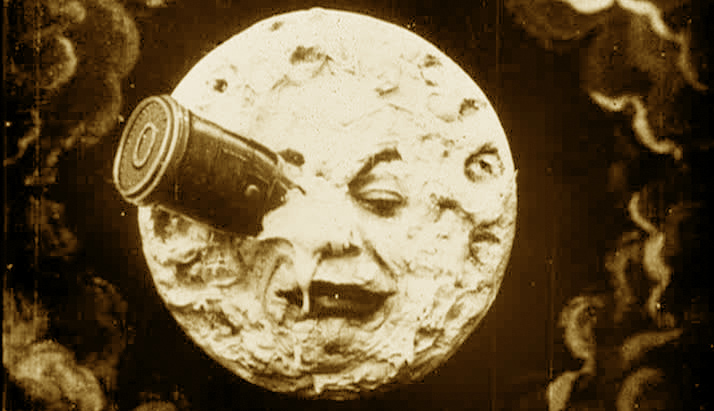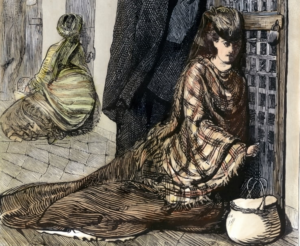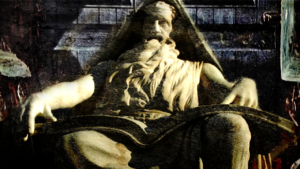The School of Subversion

By AaronArt.
Around the turn of the century Impressionism was becoming more purely abstract, photography was evolving into film, and vaudevillians like J. Stuart Blackton were experimenting with film trickery that would later be known as special effects and animation. Thus was born a film-friendly story structure based around a quick visual punchline (usually of comedic value).
This medium, in it’s infancy, employed the tactics of logical nonsense: an ostrich would eat metal at a scrapyard and give birth to a car, or the fourth wall would break and content creators would walk offset and wave at the camera. Something essentially totally alien to art of the pre modern area. One could argue that these ideas were just an artifact of the time-based format of film, but after applying a critical eye to this flippant practice, after 120 years of hindsight, one can see the outcome more clearly.
There is now a dependence on these tropes for the modern institution of creativity. This has shaped the suggestive imagination with the idea that subverting expectations is the key to provoking thought, that faith in story and visuals can be traded if your favorite actor somehow acknowledges you by winking at the camera, and that the character in the play is less important than the person portraying them (giving rise to the concept of celebrity). While the fourth wall was not invented in the film era, many artists would paint themselves working on a canvas, but during the early film era it began to take a larger focus.
Actors throughout recorded history were seen as people to be wary of and often outright scornful towards, despite or perhaps due to their easy popularity. They were renown then as they are now: as attention seekers and pseudo-prostitutes, wearing the mask of the prophet or intellectual while beneath being neither. This is not to denigrate those who are masters of their craft, or to say all are of this type, but to say there is a type, historically understood, and they were kept from ‘true celebrity’ for very practical reasons. The worst types are little better than paid liars, who become ambassadors of popular opinion and discourse via a well-seen face. It should not be treated lightly that a society as sick as ours sees actors as the highest rung of the creative totem, adorning them with wealth, influence and power. When an actor gains celebrity status, people start to expect the finely crafted persona cooked up in Hollywood boardrooms to be their real identity. This persona can then ensnare more people into the covenant of personality and influence them morally.
Logical nonsense by comparison is less aggressive in it’s subversion-by-concept, however it is a building block in the cathedral of the jarring attention-seeking that
modern art constructs. Banksy, for instance, works solely in this medium. Using incongruous logical nonsense subverts one’s expectations continuously, eliciting the same ah-ha moment repeatedly, very much like a drug addiction. For instance, If a tree chops down a lumberjack, It works on the reward centers of the brain, subconsciously filling the viewer with a sense of revenge-elation from following that logic to it’s absurd conclusion. If one is familiar with the concept of the epiphany chord (a chord structure that elicits the feeling of discovery and revelation) you might know that it is used over loud speakers in casinos as people gamble their hard earnings in search of subconscious treasure. Similarly, the concept of logical nonsense lulls the subconsciously sleeping observer into a superficial feeling of adventure with ever-decreasing pay-offs.
As a cheaper and more avant-garde example, Dogme cinema is a technique of using only what is available at the time for a film. A minimalistic approach, something birthed out of Modernism, relying deeply on the talents of the actor to carry the story, which in turn gives the actor more power (the dangers of which previously stated). Additionally we get tropes like role reversal, where the monster becomes the ironic hero, and vise versa.
In addition, folklore which is the foundational heart of civilization has been put through the meat grinder to be plopped out as a cheap material commodity. Used primarily to sell sugary corn syrup with cereal-box leprechauns and spandexed, comic-book ‘Thors’ in morally backwards and hyper-democratic and consumerist franchises. Super-hero is a term as well suited
in the Huxleyan tradition of the honest society based on lies. These cultural obscenities tell the viewer that a mythical archetype must hold essentially corporate values to be good, thus replacing traditional folklore lessons in a nihilist process of debasement and destruction more pernicious than an atom bomb. The subversion is harder for the average person to recognize, as they dress their deceitful garbage in the fun outer-trappings of the adventure story, or at least the tertiary symbolism of the real myths.
Traditional art is a system to inculcate a society with objective moral standards, an expression of civilizational self-belief, whereas Modernism’s purpose is to disguise inverted values with the costume of individualism. The individualist who denies the wisdom of a community turns to elite consensus for their personal identity without awareness of the manufactured nature of that consensus or it’s ultimate destructive purpose. Sadly, the lie has succeeded for so long that now that our very concept of tradition applies to what we know as modernity, while actual tradition is viewed as reactionary. What was the standard is now the reaction.











